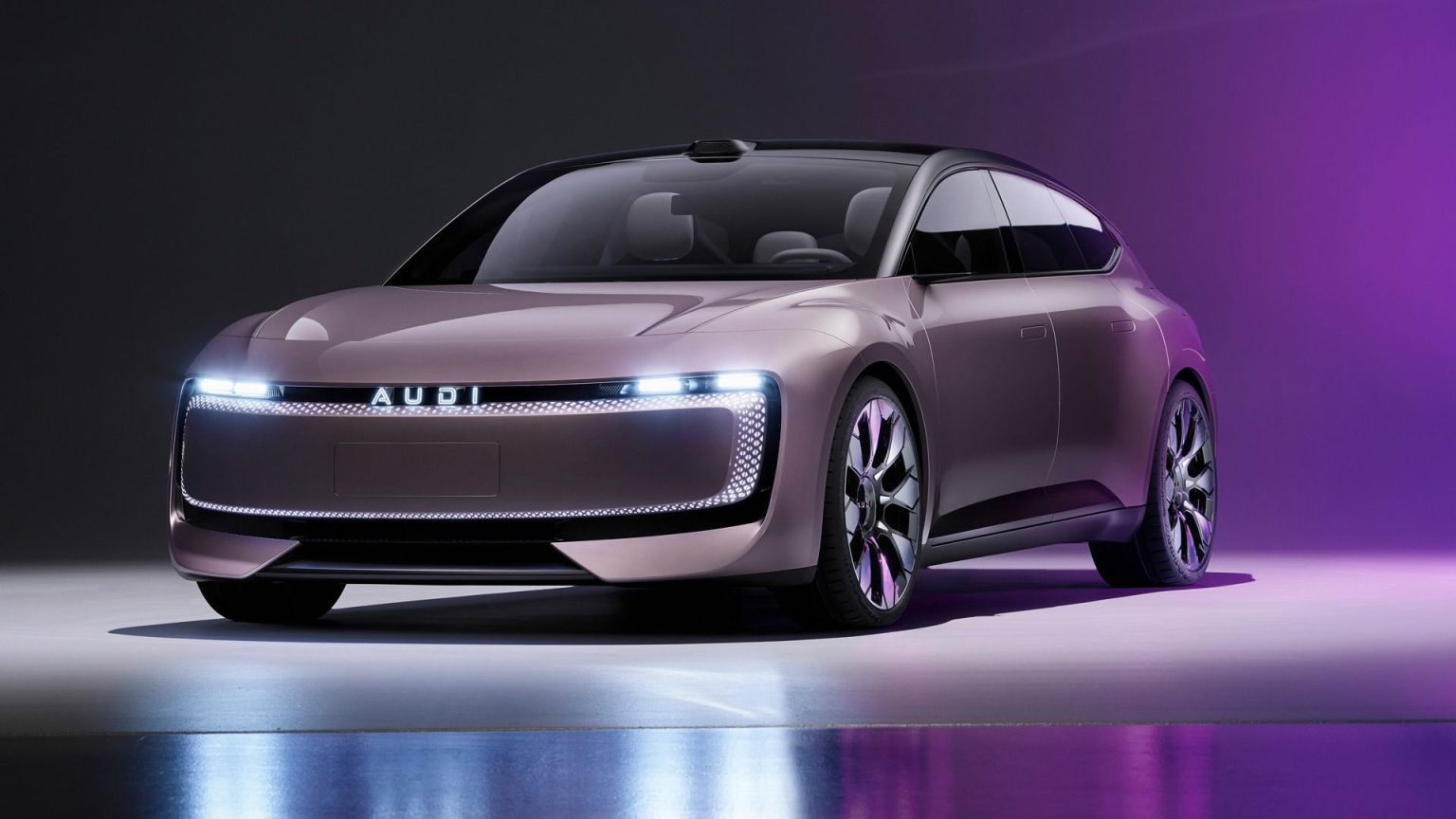In a bold move to revitalize its presence in the highly competitive Chinese market, Audi has unveiled a new brand identity that drops its iconic four-ring logo in favor of a sleek, all-caps “AUDI” logo. This rebranding marks a significant shift in Audi’s strategy to attract China’s tech-savvy consumers, focusing on advanced connectivity and automated driving in an effort to boost sales and consumer appeal.
A Fresh Look for a New Era in China
Audi debuted its new branding alongside the introduction of the E concept, an electric Sportback designed specifically for the Chinese market. The vehicle, which notably lacks the brand’s familiar E-Tron label, is a bold departure from Audi’s usual design language. The AUDI logo, in all capital letters, takes center stage, symbolizing the company’s desire to present itself as modern, innovative, and in tune with the expectations of Chinese consumers.
The rebranding is part of a larger strategy to revitalize Audi’s fortunes in China, where the brand has faced significant challenges. In the first half of 2024, Audi sold fewer than 10,000 vehicles in the country, a concerning decline in one of the world’s largest automotive markets. With homegrown automakers like BYD gaining a strong foothold by offering more affordable and feature-packed electric vehicles, Audi’s traditional image was no longer resonating with a younger, more tech-oriented generation.
The AUDI E Concept: A Glimpse into the Future
The new AUDI E concept showcases the company’s renewed focus on the electric vehicle (EV) market. It represents a preview of three upcoming mid- and full-sized models Audi plans to introduce in China starting in mid-2025. The car is powered by an Advanced Digitized Platform developed in partnership with SAIC Motors, a Chinese state-owned automotive giant. The platform features an 800-volt architecture, a key technology that enables fast charging and greater efficiency in electric vehicles.
This partnership, which also includes Fermín Soneira, former head of Audi’s electric vehicle division, now leading the new team, is aimed at driving joint development across areas like purchasing, production, and sales. Audi’s leadership sees this collaboration as a strategic move to better compete with Chinese automakers that have cornered the market with tech-heavy offerings.
Responding to Changing Consumer Demands
Audi’s CEO, Gernot Döllner, stated that the company is focused on China’s more tech-savvy customers, who increasingly demand cutting-edge connectivity and autonomous driving capabilities. As Chinese consumers continue to favor innovative, feature-rich cars, Audi is looking to position itself as a premium option that provides both high-tech sophistication and a sleek design, targeting the growing demand for electric and connected vehicles.
While Audi’s new identity and the E concept are intended to help the brand win over younger, tech-minded consumers, they also reflect the company’s broader struggle in the Chinese market. Established foreign brands like Volkswagen and Audi have faced declining sales as Chinese manufacturers like BYD and NIO continue to improve their EV offerings. These brands are able to offer more affordable prices and modern features, such as longer battery ranges and advanced driver-assistance systems, making them a more appealing choice for many Chinese car buyers.
Audi’s Challenges in China and the Road Ahead
The rebranding is part of Audi’s efforts to regain its footing in a market where competition is fiercer than ever. The partnership with SAIC Motors aims to ensure that Audi can more effectively localize its offerings, improving production efficiency while cutting costs. This collaboration is particularly important as Volkswagen, Audi’s parent company, is also facing challenges in China due to accusations of links to forced labor in the Xinjiang region, which has tarnished the reputation of some Western automakers.
Despite these challenges, Audi’s latest move signals a commitment to the future of electric mobility in China. The E concept and its bold new branding represent Audi’s long-term strategy of investing in advanced digitalization and sustainability to appeal to the next generation of car buyers.
Conclusion: A Bold New Chapter for Audi in China
With the launch of the AUDI E concept and its new, simplified logo, Audi is making a clear statement: it’s ready for the future, and it’s keen to capture the attention of China’s rapidly evolving car market. The bold decision to rebrand and focus on electric vehicles and digital innovation shows Audi’s determination to remain competitive in one of the world’s most important automotive markets. Whether this rebranding will be enough to reverse Audi’s decline in China remains to be seen, but the company is clearly betting on technology and design to win over Chinese consumers and take its place in the growing world of electric mobility.
